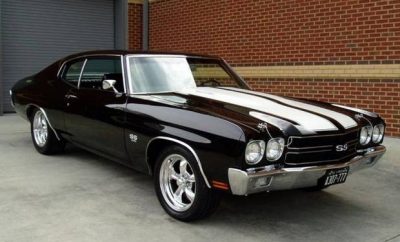By Dave Ashton
One specific genre of vehicle that has stood the test of time is muscle cars. While the build-up and cool-down from the golden years cover a few decades, it was really the late 160s and early 1970s which produced the classics. Huge engines, unique designs, and straightforward power meant the average guy and girl could own world-class car performance, with a simple enough design to tinker with on the weekends. So, let’s check out some of the obvious and not-so-obvious standout old muscle cars that have stood the test of time.
Driving a muscle car is a unique experience. The rumble of the engine, the feel of the road, and the sense of power make for an unforgettable ride. And while some old muscle cars may not be as practical as modern vehicles, their raw horsepower and classic style make them stand out in a sea of bland cars on the road today.
AMC
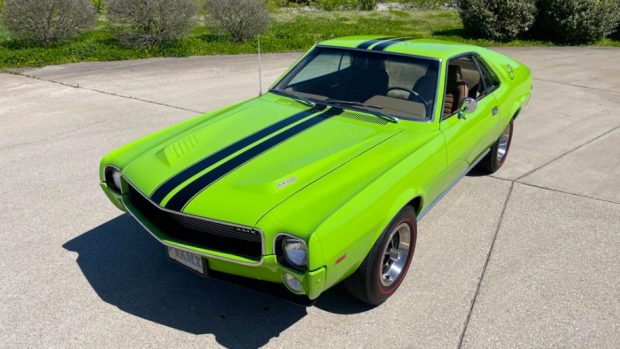
AMX – This 2-seater sports car was introduced in 1968 and was designed to compete with the Corvette. The AMC AMX had a powerful 390cu V8 engine and a stylish design that made it stand out from other muscle cars of the time. The 1968 to 1970 models are the ones to look out for.
Javelin: The Javelin was a sporty coupe that was introduced in 1967. It was available with a variety of engines, ranging from a 232 cubic inch 6-cylinder to a 390 cubic inch V8. The Javelin was a popular car for racing and set a number of records on the drag strip.
Rebel: The Rebel was a full-size car that was introduced in 1967. It was available with a range of engines, including a 343 cubic inch V8 and a 390 cubic inch V8. The Rebel was known for its comfortable ride and smooth handling.
Hornet SC 360: The Hornet SC 360 was a compact car that was introduced in 1971. It was powered by a 360 cubic inch V8 engine and was designed to be a lightweight, high-performance car. The Hornet SC 360 was a popular car for racing and set several records on the drag strip.
Buick
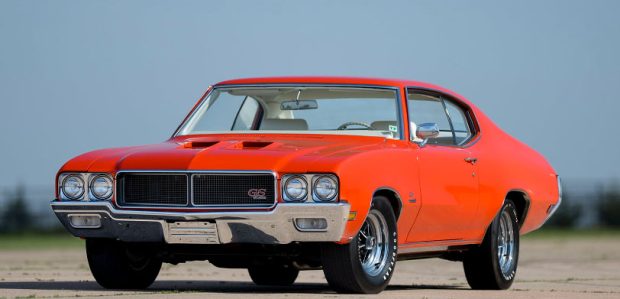
Buick GS 455 Stage 1: The GS 455 Stage 1 was an upgraded version of the Buick Gran Sport that was introduced in 1970. It was powered by a 455 cubic inch V8 engine that produced 360 horsepower and 510 lb-ft of torque. The GS 455 Stage 1 was known for its speed and acceleration and was one of the fastest muscle cars of its time.
Buick GS 400 (Stage 1): The GS 400 was a higher-end option of the Buick Gran Sport for 1968. It was powered by a 400 cubic inch V8 engine that produced 340 horsepower and 440 lb-ft of torque. In 1970 the Stage 1 produced a 13.38 second quarter-mile at 105.50mph.
Buick GNX: The GNX was a high-performance version of the Buick Regal that was introduced in 1987. It was powered by a turbocharged 3.8 liter V6 engine that produced 276 horsepower and 360 lb-ft of torque. The GNX was one of the fastest cars of its time. This was a rarity in the 1980s muscle cars scene.
Chevrolet
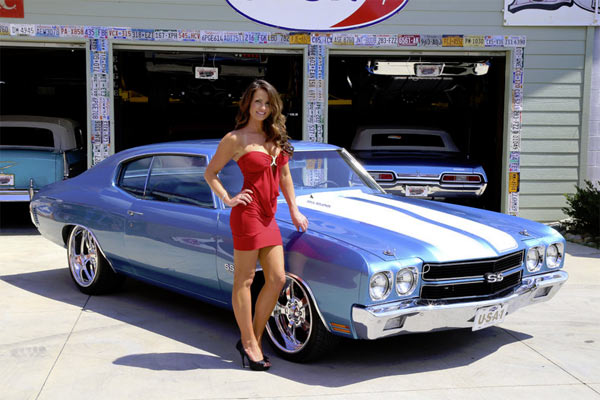
Chevelle SS 454 – The Chevelle SS 454 was introduced in 1970. Powered by a 454 cubic inch V8 engine that produced 450 horsepower and 500 lb-ft of torque, the SS 454 was arguably the king of the muscle cars. The Chevelle SS 454 still stands out as a shining example of the breed.
El Camino SS 454: The 1970 El Camino SS 454 was essentially a Chevelle SS 454 with lots of carry space at the back. It was powered by a 454 cubic inch V8 engine that produced 450 horsepower and 500 lb-ft of torque. The El Camino SS 454 combined utility and performance, still being overshadowed by many of its contemporaries.
Camaro Z/28: The Camaro Z/28 was a special performance package for the 1967 year. It was powered by a 302 cubic inch V8 engine that produced 290 horsepower and 290 lb-ft of torque. Just 602 examples were bought by the public in 1967. But the template proved so popular, the model is still available today.
Camaro ZL1: The Camaro ZL1 was a special order vehicle through Chevrolet’s COPO system, producing the most potent and valuable car of its day. It was powered by an all-aluminium 427 cubic inch V8 engine that produced 430 horsepower and 450 lb-ft of torque. Due to low sales numbers, the ZL1 is arguably one of the most collectable muscle cars around.
Nova SS: The Nova SS was introduced in 1963. It was available with a range of engines, including a 327 cubic inch V8 that produced 350 horsepower and 360 lb-ft of torque. The Nova became a bone-defied muscle car in 1968, with a tough exterior, and plenty of options. The top of the pile is the Yenko Nova, with only 37 examples being produced.
Monte Carlo SS 454: The 1970 Monte Carlo SS 454 is a bit of a sleeper car, combining luxury and power. The car housed a 454 cubic inch V8 engine that produced 360 horsepower and 500 lb-ft of torque. The Monte Carlo may not have the street credibility of its contemporaries, but it sure has the power.
Yenko Camaro: The Yenko Camaro was a limited edition version of the Camaro. Don Yenko used the Chevrolet COPO ordering system to obtain the best engines, transmissions, and other parts available at the time. The highest-rated engine was a 427 cubic inch V8 that produced 425 horsepower and 460 lb-ft of torque. Due to each vehicle having the best of the best parts of the time, they were very expensive, thus only a handful was ever produced.
Dodge
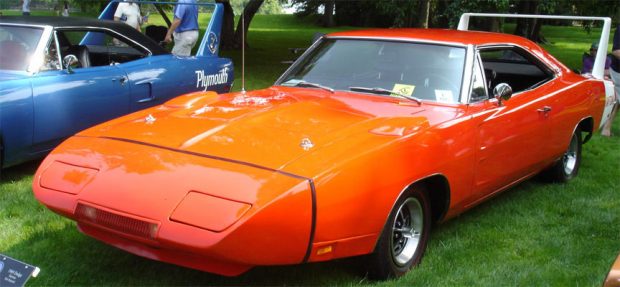
Dodge Dart GTS: The Dart GTS is a great example of the idea of stuffing a huge engine in a small car. Dealers such as Norman Kraus (Mr. Norm), added a 440 cu. V8 (375hp) engine, making them competitive enough for NHRA Super Stock racing.
Charger Daytona: The Charger Daytona was adapted from the Dodge Charger in 1969 specifically for NASCAR racing. the most competitive engine was a 426 cubic inch Hemi V8 that produced 425 horsepower and 490 lb-ft of torque. The car stood out with its huge nose cone and tail wing. Dubbed the ‘Winged Warrior,’ the Dodge Charger Daytona hit 200 mph in 1970, making the car the first in NASCAR history to do so.
Charger R/T: The Charger R/T was introduced as a performance package. Engine options included a a 440 cubic inch V8 producing 375 horsepower and 480 lb-ft of torque. While the first Chargers came out in 1966, it wasn’t until 1968 with the B-body and the availability of the 440 Magnum and 426 Hemi V8 engines that hit the mark. Arguably the Charger R/T is most famous for starring in the 1968 movie Bullitt.
Dodge Super Bee: Spanning the years 1968 to 1971, the Dodge Super Bee was based on the Dodge Coronet, with added performance. It was available with a range of engines, including a 440 cubic inch V8 that produced 390 horsepower and 490 lb-ft of torque. The Super Bee cost more and had better options than its Plymouth counterparts, with a 426 Hemi V8 being one of the options.
Ford
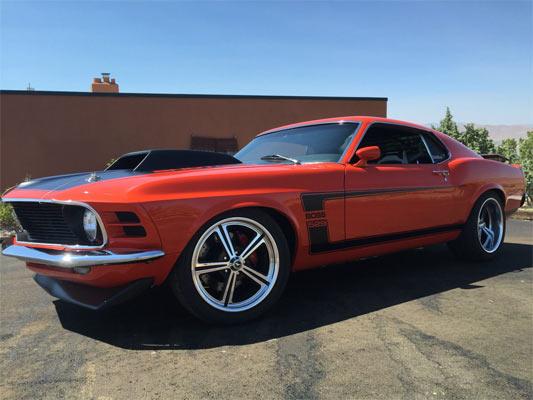
Mustang Boss 429: produced between 1969 to 1974 for NASCAR racing, the Mustang Boss 429 housed a 429 cubic inch V8 engine with 375 horsepower and 450 lb-ft of torque. The engine was good for a 0 to 60 mph in 6.8 seconds time, and was the largest engines dropped into a Mustang at the time. The whole car had to be modified to accommodate the new engine, including the front suspension, shock towers, and hood.
Mustang Mach 1: The Mach 1 lasted from 1969 to 1978. Various engine options were available from the 351 cubic inch V8 to a 428 cubic inch V8. The car had a distinctive hood scoop, with early versions being the most prized.
Fairlane GTA: The Fairlane GTA was a performance variant of the Ford Fairlane available since 1955. Engine options ranged from a 390 cubic inch V8 to a 427 cubic inch V8, with the latter capable of producing 425 horsepower and 480 lb-ft of torque. lots of performance options were available time such as tuned suspension, a limited-slip differential, and power front disc brakes.
Mercury
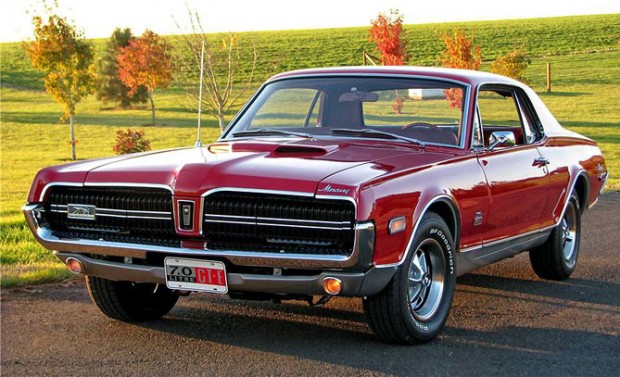
Cougar GT-E: produced between 1968 in 1970, the Cougar GT-E was available in either a 390 cubic inch V8 with 335 hp and 427 lb-ft of torque or a 428 cubic inch V8 with 360 horsepower and 460 lb-ft of torque. With its distinctive styling, the Cougar may not be the most obvious performance muscle car, but it is definitely up there with the rest.
Oldsmobile
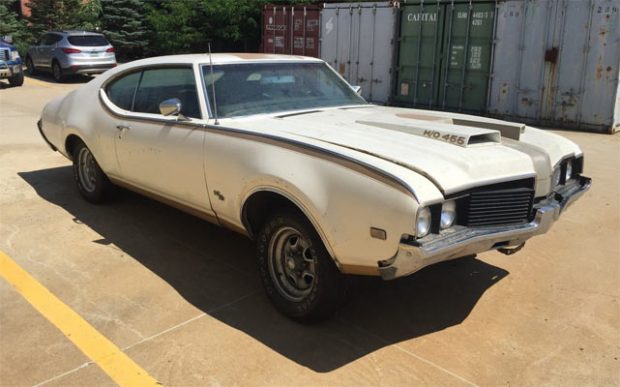
Oldsmobile 442: The Oldsmobile 442 was inspired by the Oldsmobile cutlass in 1964. The model gained its reputation from its 455 cubic inch V8 engine producing 370 horsepower and 500 lb-ft of torque, making it one of the most powerful cars of its time. The ‘442’ comes from the 4 barrel carburettor, 4 speed transmission, and dual exhaust.
442 W-30: The 442 was good enough in itself, but the Oldsmobile W-30 package added something extra. The package was designed for drag racing, so added features such as a highlift camshaft, aluminium intake manifolds, heavy duty suspension, and tuned exhaust system. The W-30 package also included styling upgrades such as ram air induction, fibreglass hood, along with bucket seats and a fancy steering wheel. Expect pay top dollar for one of these examples.
Plymouth
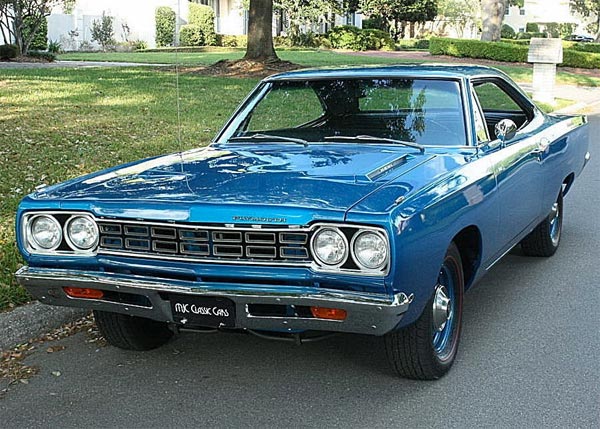
Fury 426 Hemi: The Fury 426 Hemi was capable of a 0 to 60 mph time in under 6 seconds. The engine was a 426 cubic inch Hemi V8 producing 425 horsepower and 490 lb-ft of torque. The Hemi version was only built in limited numbers, making it a rare collector’s item today.
GTX 426 Hemi: Produced between 1967 and 1971, the Plymouth GTX 426 Hemi used a 426 cubic inch Hemi V8 with 425 horsepower and 490 lb-ft of torque. Many performance upgrades are available on the options list along with luxury features such as power windows, power brakes and an upgraded audio system.
Plymouth Road Runner: The Plymouth Road Runner was produced from 1968 to 1980 as a muscle car for the masses. Based on the Plymouth Belvedere, the Roadrunner was a more basic offering, but still had the power. The 426cu. Hemi V8 was an option with 425 horsepower and 490 lb-ft of torque. but you could also go for at the time the 383 cubic inch V8, which was still very capable. Many optional upgrades are available at the time like heavy-duty suspension, more powerful brakes and a performance exhaust system. most famously, the horn sound was based on the loony Tunes cartoon.
Plymouth Barracuda The Plymouth Hemi Barracuda was built between 1964 in 1974. Arguably one of the most famous muscle cars around, the topline engine was the 426 cubic inch Hemi V8 with 425 horsepower and 490 lb-ft of torque, and a 0 to 60 mph time of just over 5 seconds. The huge body design and wealth of options became a firm favourite in the muscle car community.
Plymouth Superbird: Just like the Dodge Daytona, the Plymouth Superbird was a ‘Winged Warrior’ based on the Plymouth Road Runner designed for NASCAR racing. The topline engine was the 426 cubic inch Hemi V8 with 425 horsepower and 490 lb-ft of torque. While the Superbird is one of the most collectable muscle cars today, it didn’t sell well back in the day, looking more like an oddity compared to the rest of the pack.
Plymouth Duster 340: produced between 1970 1976, the Plymouth Duster 340 was small in appearance with distinctive styling. The 340 cu. V8 was capable of 275 horsepower and 340 lb-ft of torque, and was popular with enthusiasts of the time. The Duster was also a great example of the range of loud colors available at the time such as Plum Crazy Purple and Hemi Orange.
Pontiac
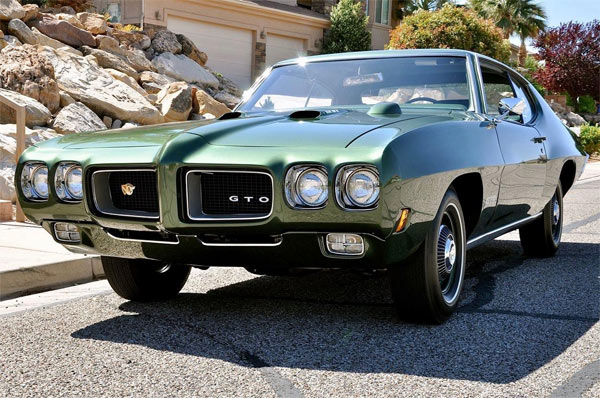
Pontiac GTO: The Pontiac GTO is one of America’s original muscle cars. General Motors produced the vehicle from 1964 to 1974, inspired by the Pontiac Tempest. The 389 cubic inch V8 version could produce 348 horsepower and 428 lb-ft of torque, but it was the 1968 and onwards styling that won over fans. The GTO was available with plenty of performance options such as Ram Air Induction and heavy-duty suspension, but eventually succumbed to early nineteen seventies emission regulations, insurance charges and the tastes of the time.
Pontiac Firebird: Firebird was originally introduced in 1967 as a direct answer to the Chevrolet Camaro and Ford Mustang. Engines range from a 6-cylinder up to a 455cu. V8 with 400 horsepower and 500 lb-ft of torque. The Firebird essentially kept going up until 2002, showing its worth over the years. Most iconic from this model was the ‘screaming chicken’ decal on the hood
Grand Prix: Originally introduced as a luxury performance car in 1962, the Pontiac Grand Prix built up to have a 455 cu. V8 engine, along with its luxury accompaniments. This model may not fund the street credibility or sporty looks of the others, but it definitely had the engine performance.
Conclusion
If you’re interested in owning one of these classic American muscle cars, there are a few things to keep in mind. First, old muscle cars can be expensive and need a lot of ongoing maintenance, so it’s important to set a budget before you start shopping. Research and more research is needed for every potential muscle car purchase, along with ideally buying from a reputable source.
One option is to buy a muscle car which is in need of restoration. While you may initially pay less for the vehicle, you have to factor in obtaining all the parts and the time and work involved. Sometimes in life buying the finished article is more cost-effective and less of a headache.
If you’re in the market for a classic American muscle car for sale, check out the most popular muscle car dealers and auction houses as a start point. The outlet you choose really depends on your budget. For instance, you could find a cheap base model on websites such as eBay. But most likely be prepared for some restoration work. If you require a vehicle that is numbers matching, in near original condition, and with loads of documentation, you will need to visit a specialist dealer or auction house.
When it comes to the best American muscle cars, opinions can vary. Some may argue that the 1970 Plymouth Superbird is the ultimate muscle car, while others may choose the Chevelle SS 454. And of course, the debate over the fastest muscle car continues, with the likes of the Chevy Camaro ZL1 and Dodge Charger Daytona vying for the title of the fastest muscle car in the world.
In conclusion, old muscle cars are an important part of muscle car history in America. They are a certain way of thinking and following the mindset of a certain template, i.e. There is no replacement for displacement in an ICE car, and obviously bigger is better.
VN:F [1.9.22_1171]
VN:F [1.9.22_1171]
Source link


